>HUNT-OS V 2.15.1 - USER PROFILE: Sal Cloud
-Viewing Wiki
Loaded Article: HuntingAndDiet.html: >_
Dietary Habits
Arpines are strict carnivores who rely on the base nutrients found in live and dead creatures in order to build their body and maintain its functions. Arpines metabolize animal proteins and fats directly without any form of gluconeogenesis process, and also because of this arpines can not metabolize glucose or extract nutrients from plant matter making them entirely reliant on animal nutrients to survive.
Since arpines are reliant on hunting live prey they opt to extract as much as they can out of their kills; they will try to consume as much of their prey as they can and will preferably leave nothing at all left of a carcass remaining. Their jaws and digestive systems have evolved to crush and thoroughly digest every part of their prey, including hard tissue and bones, all while creating very little waste. Their jaws have a bite force similar to that of a hyena which can pulverize bones and hard tissue (which they crush with their back molars) while their esophagus and stomach have a strong mucus-coated lining to handle sharp bone shards without injury. Their stomach acids are incredibly strong and will dissolve bones within a day or two and kill most potential infections they would otherwise get. They also have natural resistance to prions.
Arpines can effectively make a freshly hunted carcass "disappear". However, they also lack the enzymes to process plant matter and a larger-than-marginal intake of plant matter will cause sickness or induce a vomiting reflex.
An individual arpine on average can eat a quarter to a third of their own body mass in a day, although some individuals may consume even more. After larger fills they may go a few days before eating again. Despite an arpine only needing to eat infrequently dangers come from not eating for a long period of time. If they don't eat for too long they will begin to revert back to a more instinctual state: during the late stages of this state they will become fully instinctual and mindlessly violent, being purely driven by hunger while forgetting their personality and morality, and may even attack other arpines. This is thought to be an automatic desperate last-ditch emergency survival mechanism. Arpines seek to avoid this state at all costs, and this state has even become a subject of terror in arpine cultures known as The Crave.
Solo Hunting
Hunting tactics will vary heavily depending on factors such as the number of available arpines, individual capabalities, and the type of prey that is being hunted. A solo arpine will typically target smaller prey but will sometimes go for medium-sized prey, how they go about this can vary from the hunter relying on stealth and stalking their prey before making their move, waiting in a stationary position until something comes by, or through some form of trickery. While most solo arpines prefer these more effort-efficient approaches they will also try to chase and tackle prey directly if the situation demands it (or if they just feel like it) and to varying degrees of success. A solo arpine going after smaller prey may have to take a few animals to have their full fill, but may just settle for a partial fill.
Generally speaking most arpines are good at hunting for themselves, which they need to be as arpines sometimes go long stretches of time alone, while others just prefer the lifestyle.
Vulmer.jpg
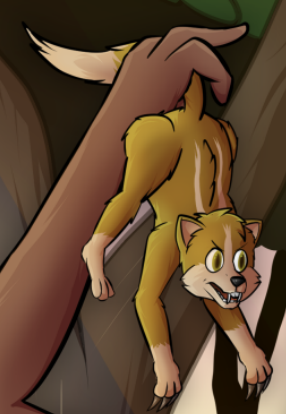
Vulmers are a common small animal that are considered one of the arpines' natural prey. They are popularly eaten by solo hunters.
They are said to taste rich and juicy.
Group Hunting
Arpines will work together as packs to take down larger prey. When hunting in packs arpines will divide into three main roles: flankers, bulwarks, and chasers. The role of chasers is to pursue the targeted prey animal from behind, meanwhile flankers run ahead and will either attack from the flank or prevent prey from escaping, and bulwarks will be positioned ahead of the prey to act as a wall to cut off it's path and hold it at a position until the other group members can surround it. Hunting large prey can be dangerous and complicated so arpines are selected based on personal traits and talents for their selected roles: bulwarks are at-most risk for injury therefore bulwarks are typically those with a higher tolerance for pain and who can handle a beating, flankers are typically those with high stamina as they need to run ahead of the group during pursuit, meanwhile chasers are a more open role.
Some arpines might fit more generalized miscellaneous roles that are flexible to the specific hunt. Arpine hunting parties are typically coordinated by a hunt leader and very large parties will see a division of teams each with their own team leaders being coordinated by the main hunt leader.
The size of the group also determines tactics. The described above is usually true of larger packs. A duo or trio of arpines hunting is typically more akin to two or three arpines aiding one another in solo tactics. Small packs may also just pool individual or duo kills.
When it comes to hunting larger prey arpines will make sure the animal is dead before they begin eating in order to reduce potential to injuring themselves: blows to the neck are a reliable way to finish a prey animal off quickly. When large prey is divided among a large pack the hunters will typically eat the entrails and guts first as those parts are the quickest to decompose and must be eaten right away, once the guts have been eaten the richer organs such as the liver, heart, lungs, and brain will be given to the sick, pregnant, elders, and cubs as needed, and then everyone gets free pickings on the rest.
Pack Hunting Tactics
While hunting tactics vary widely, here is a small collection of common pack hunting tactics visualized.
Key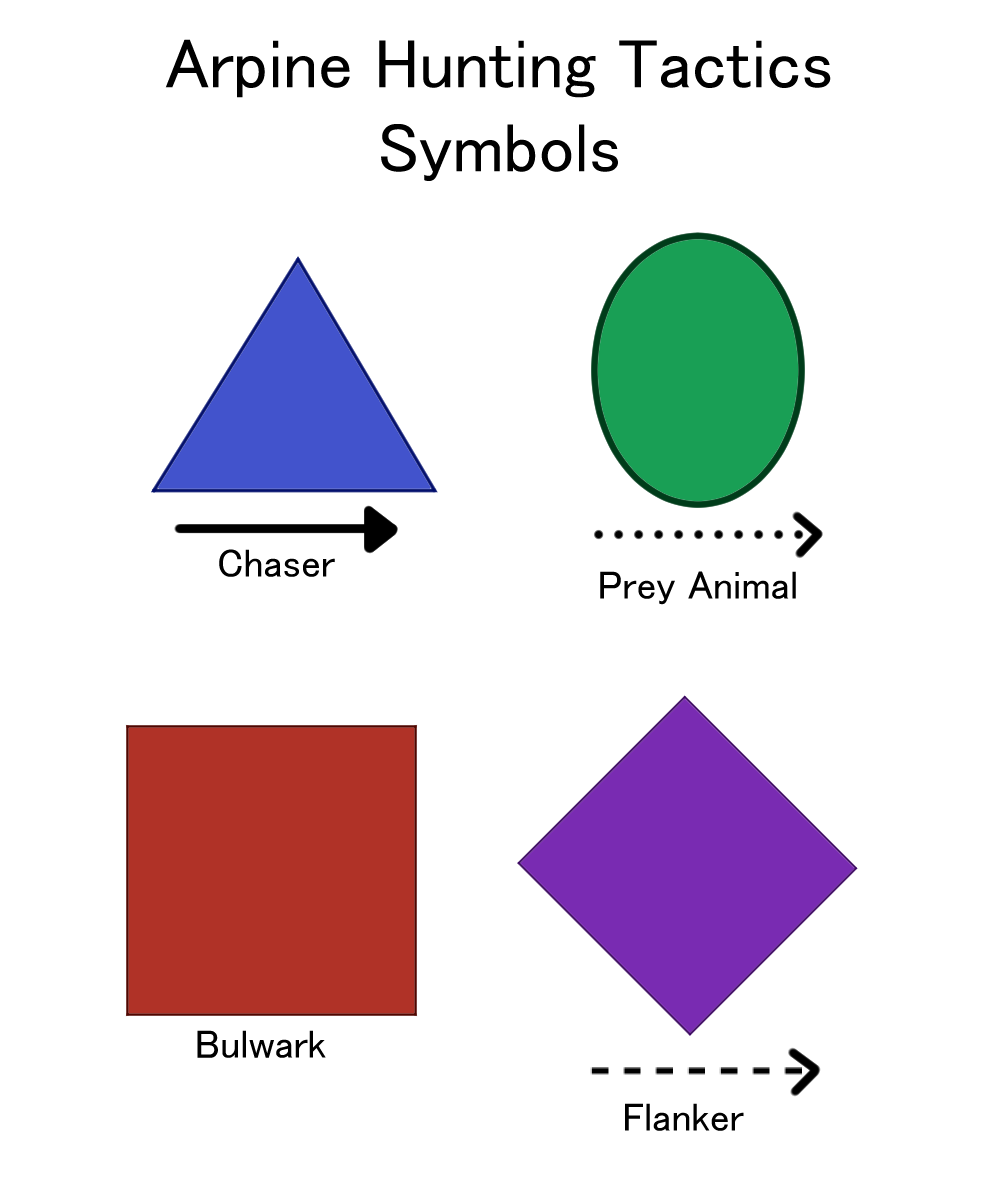
A guide to keys and symbols for discussing arpine hunting tactics. |
Basic Tactics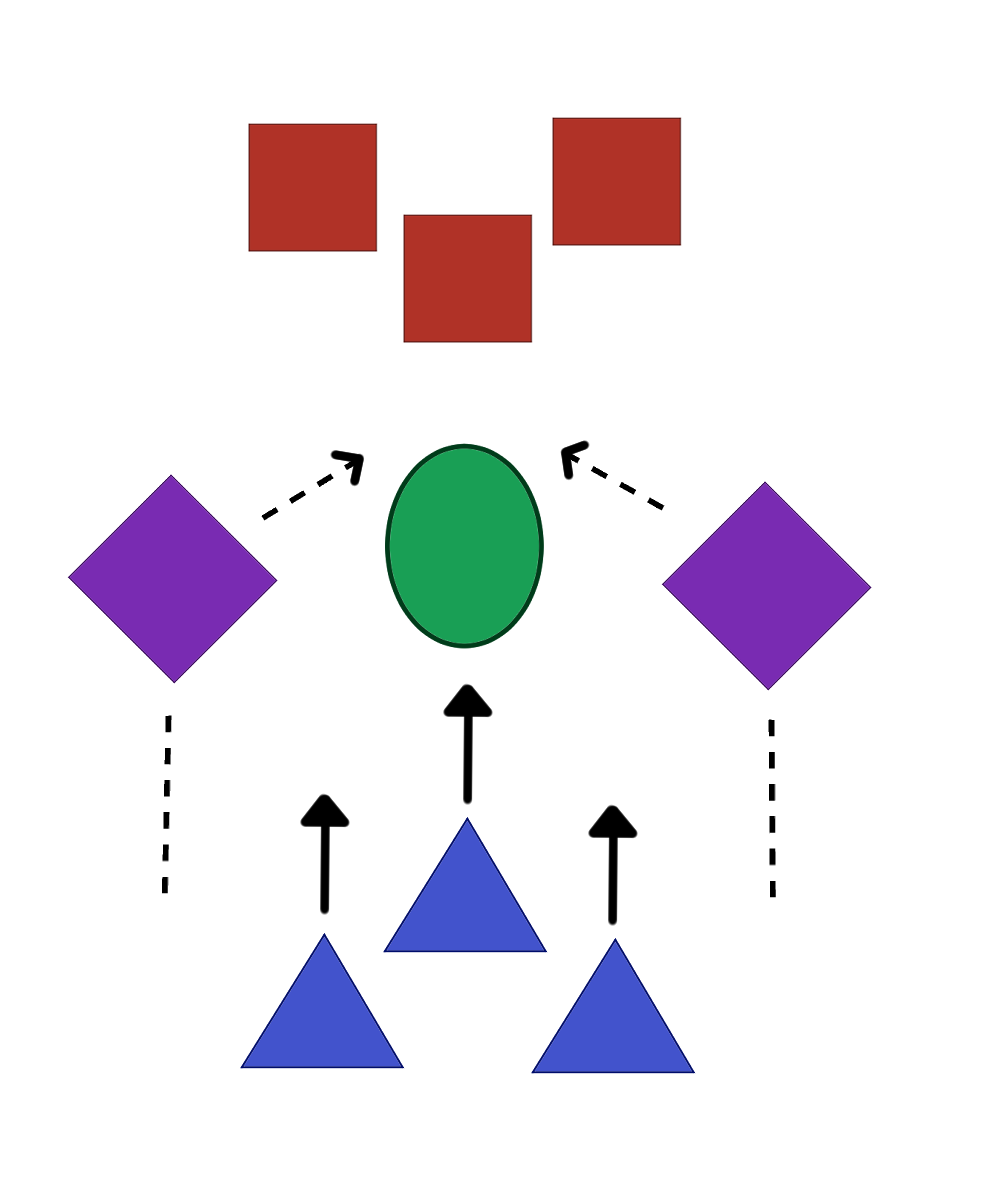
A representation of simple basic hunting tactics on a lone prey animal where chasers drive the prey into a group of bulwarks while flankers close in from the sides. |
Seperation 1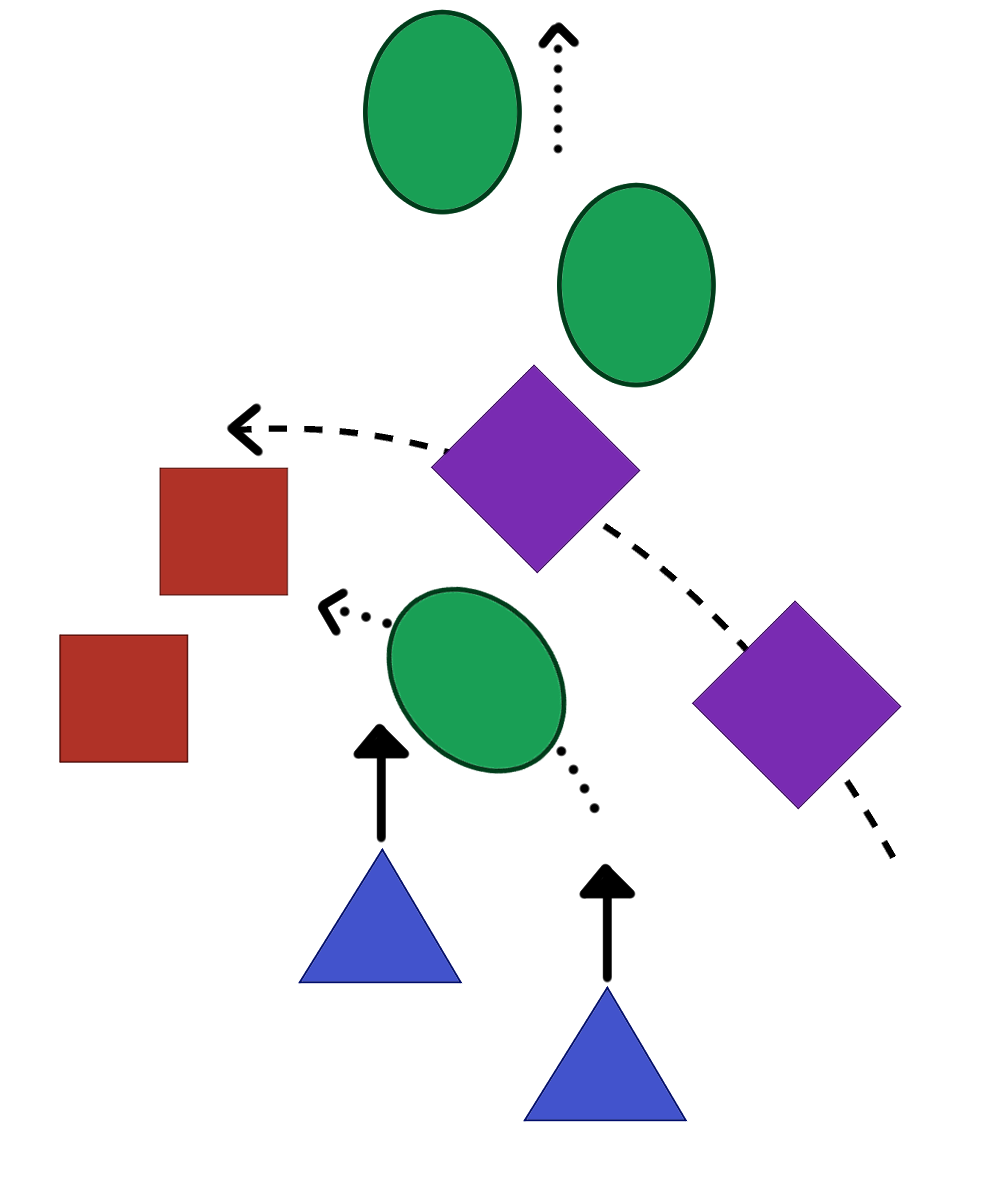
Tactics where the arpines will pick off the rear member of a herd. The target animal is cut off by flankers and is funneled into the bulwarks. |
Seperation 2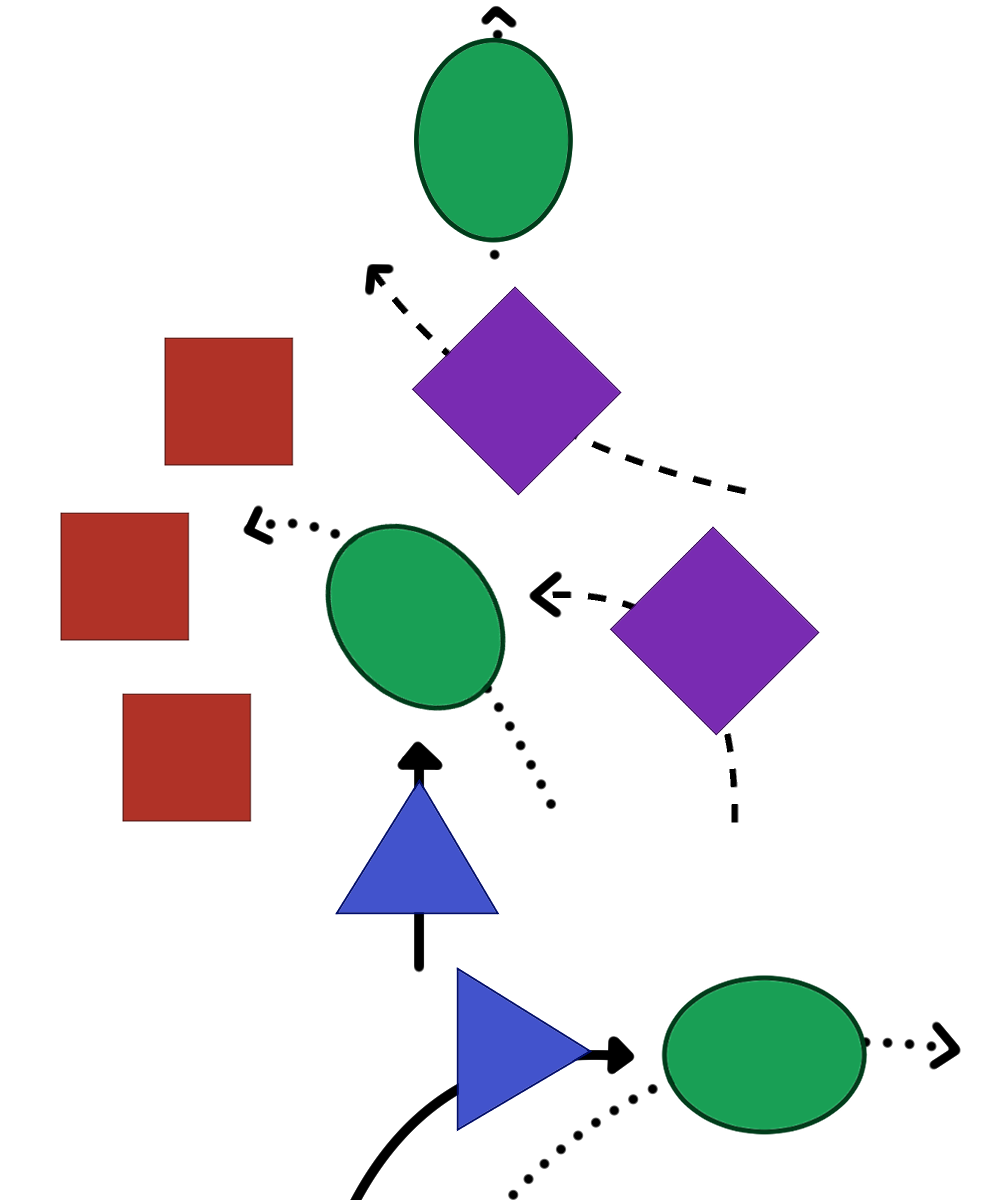
Picking off a middle member of a herd. Similar as before except a team of chasers splits off to drive the rear herd away while a team of flankers helps drive the target into the bulwarks. |
Cliff Corner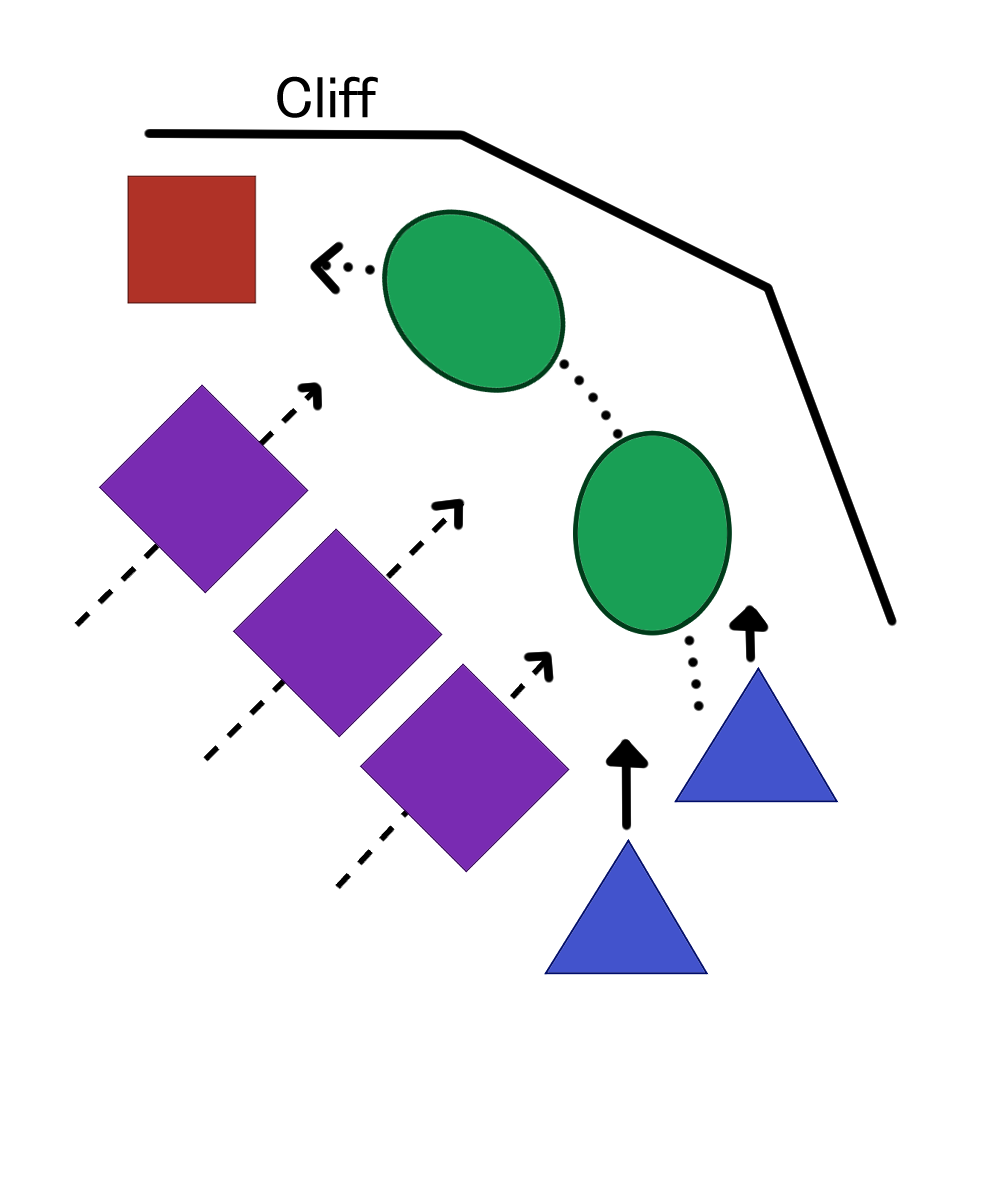
Using the corner of a cliff to help funnel and surround a herd. Tactic commonly used when there are few available bulwarks or when the group is lower in numbers. |
Ravine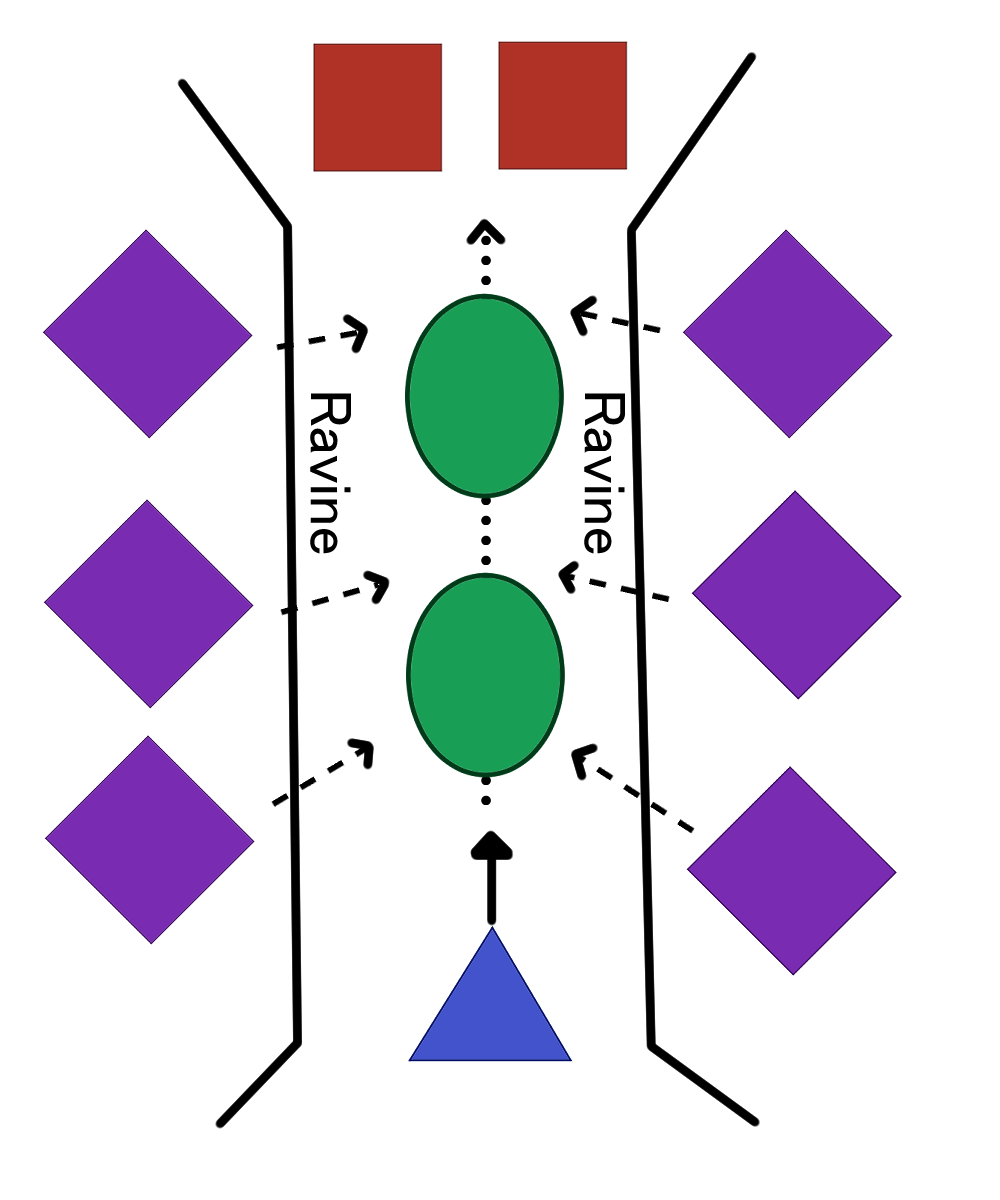
Driving a herd into a ravine where the herd where flankers are waiting to attack from the sides. Most effective at taking down large herds. Mostly used by larger groups or groups with an abundance of flankers. |
Disarray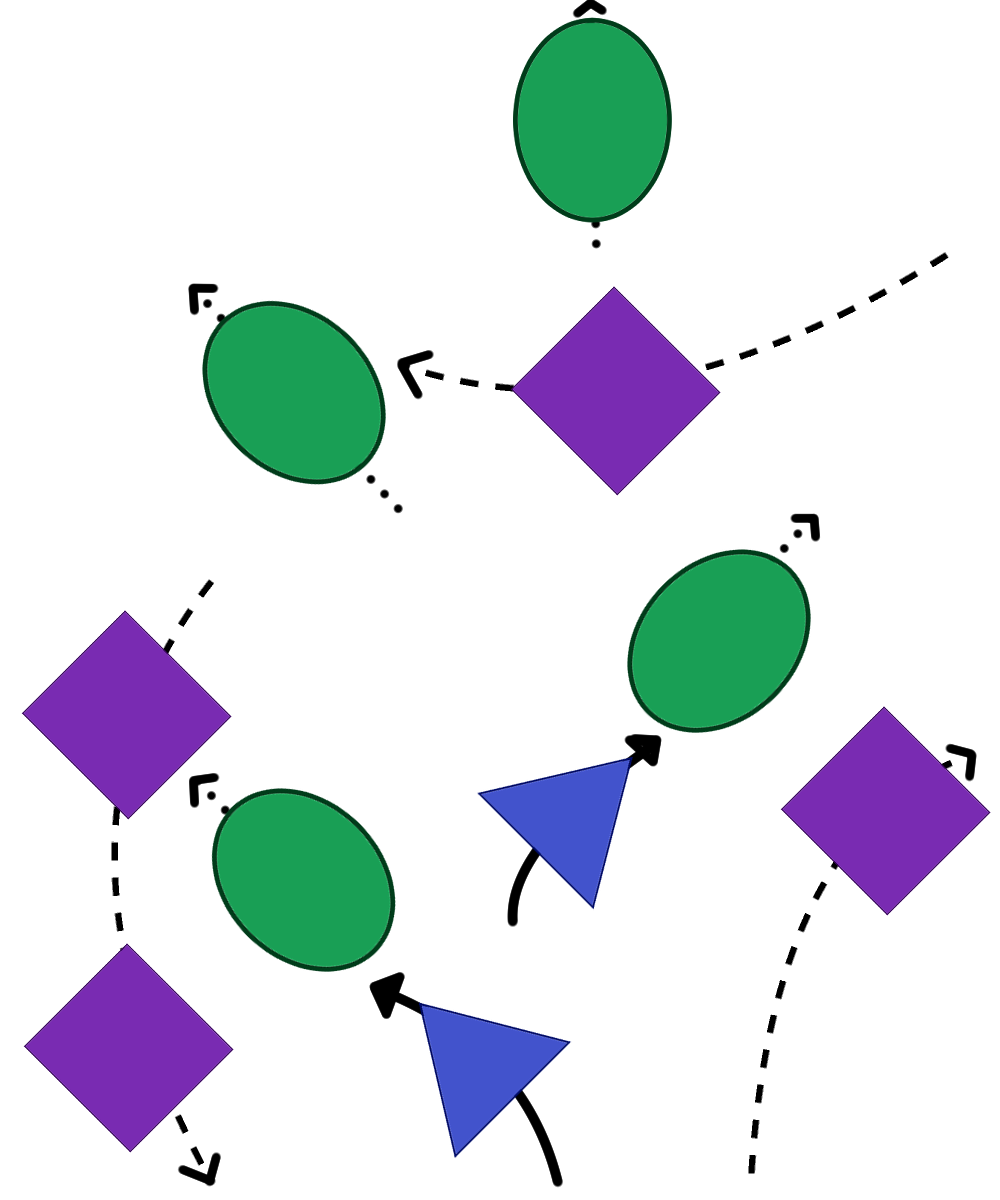
A herd driven by chasers is sent into disarray by flankers moving in erratic motions. Once the herd is broken up a random member will be picked off. Used when there are no available bulwarks. |
Bullwarks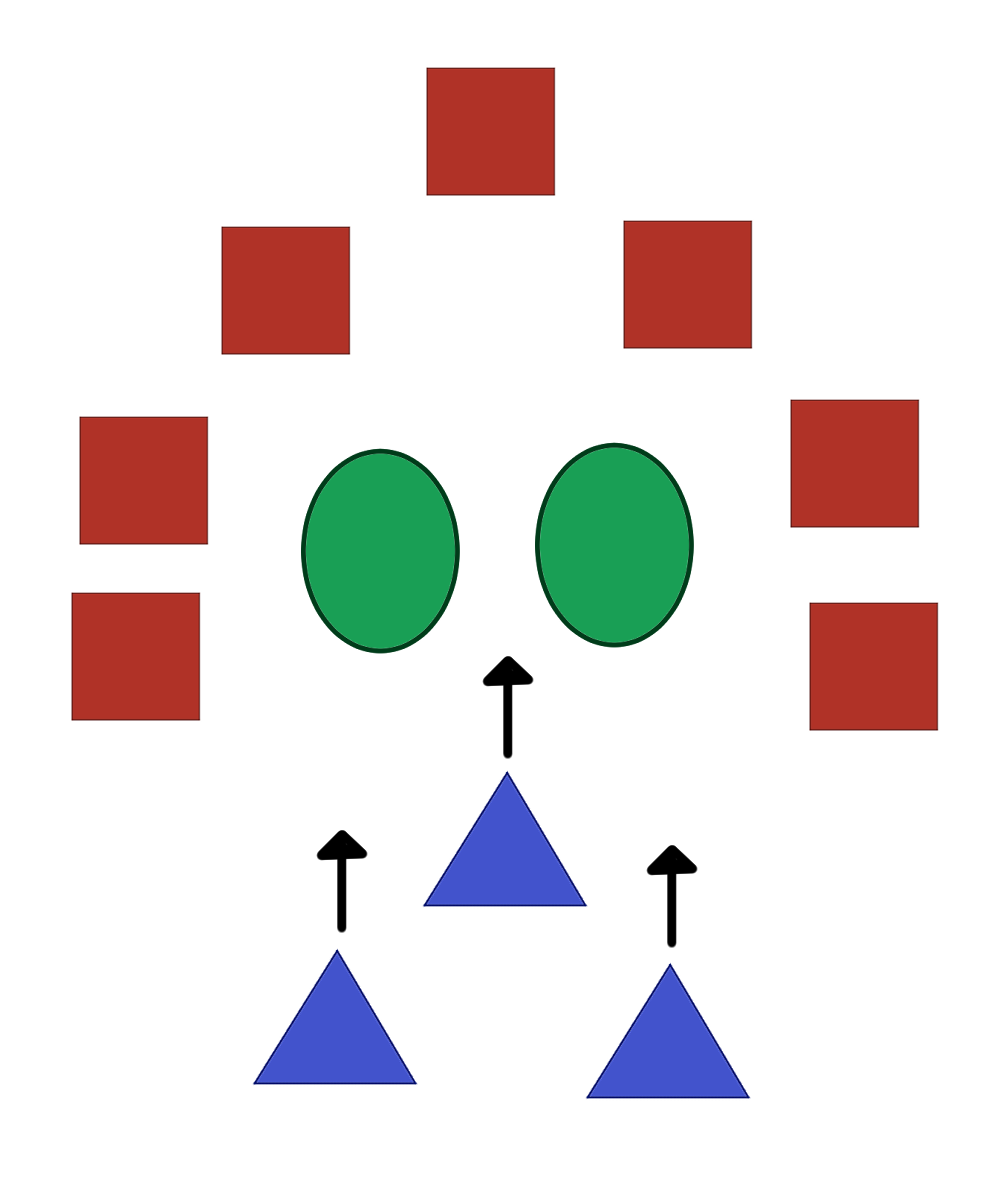
A herd is driven into an awaiting group of bulwarks. Used in sizable groups with no available flankers. |
Cliff Face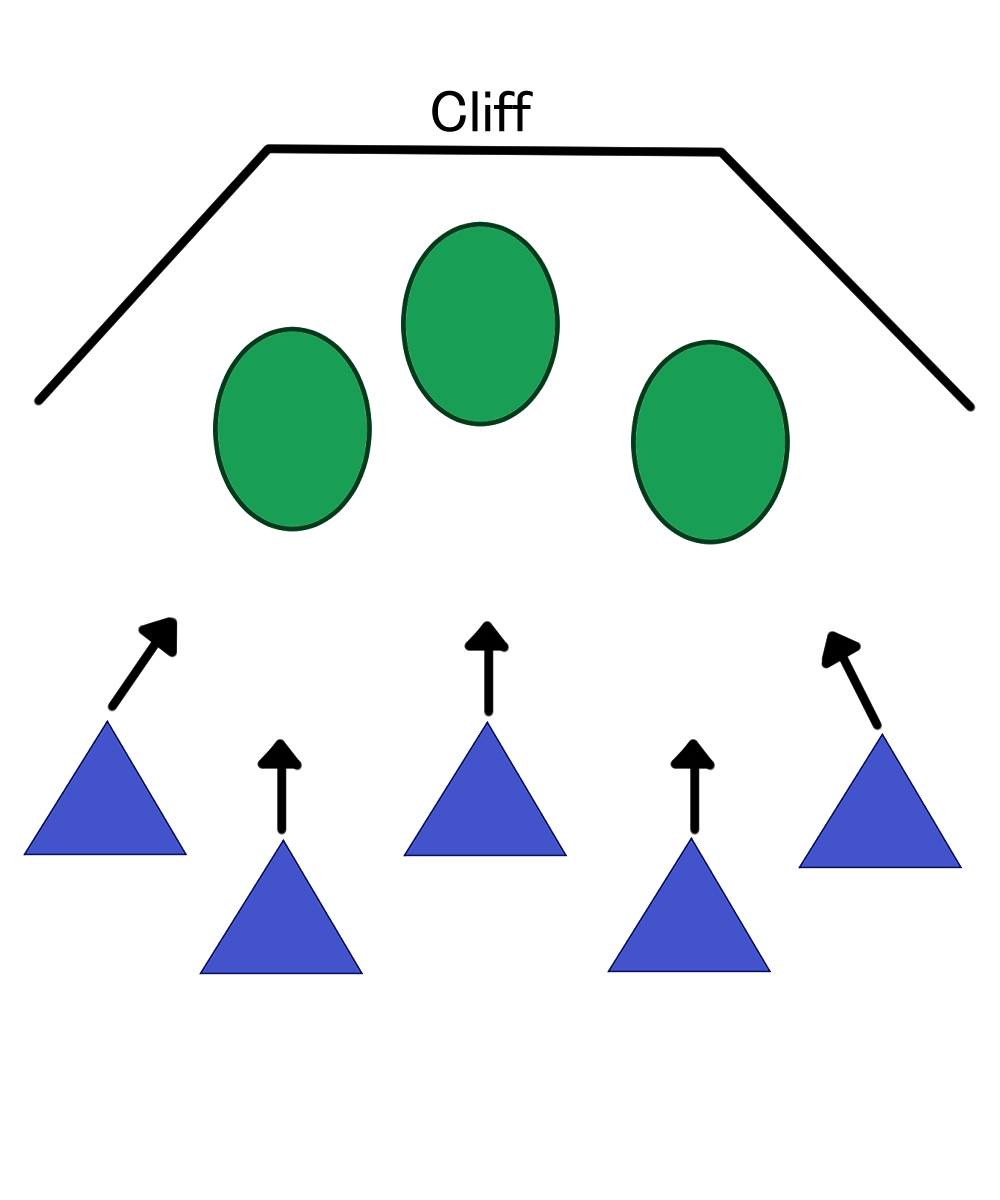
Chasers drive a herd into a position where they are surrounded on all sides by cliff faces or other impassable obstacles. Commonly used by groups only made of chasers. |
Ambush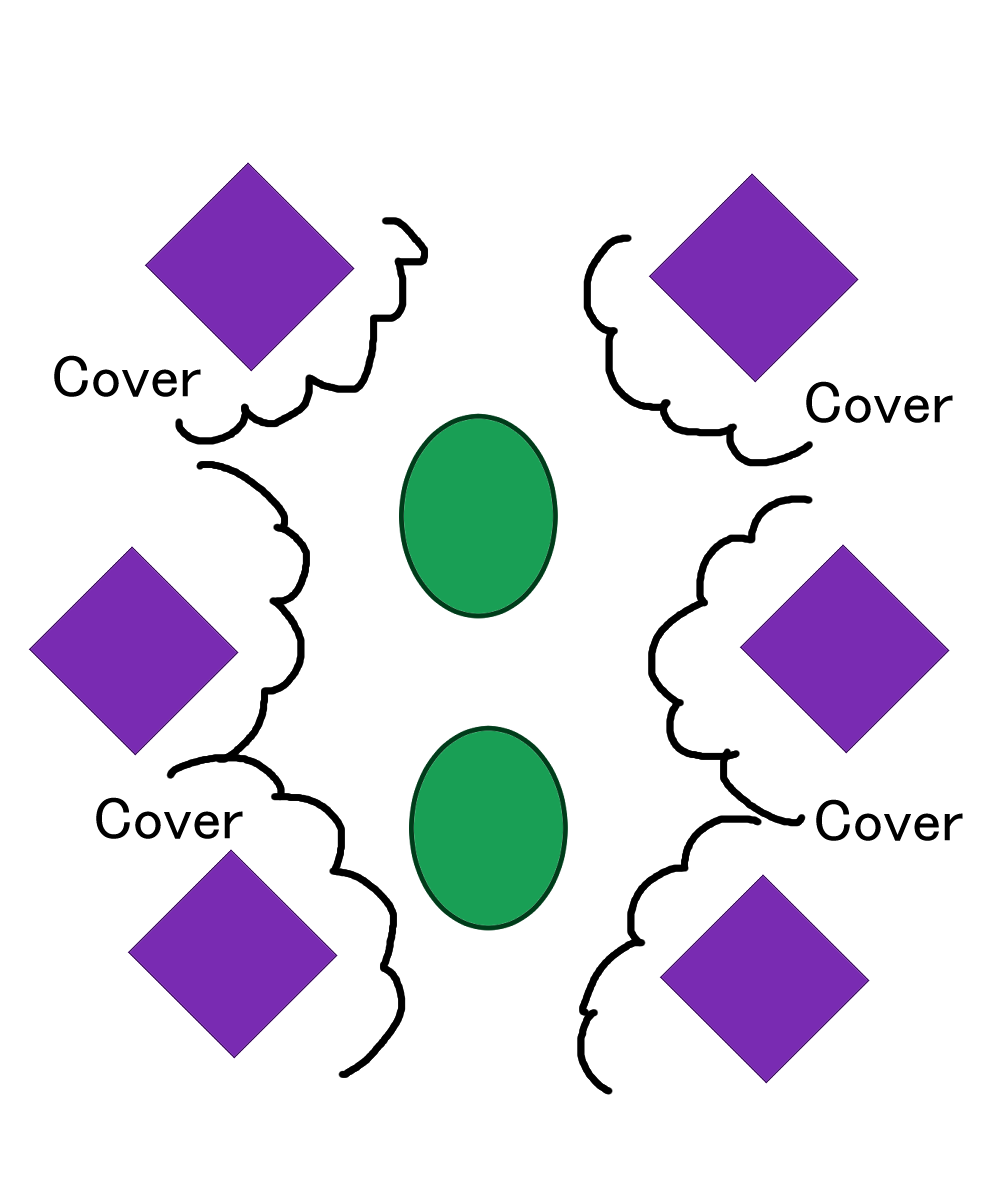
An ambush stealth tactic where flankers will wait under cover for a passing animal or herd to come by. Commonly used by groups of only flankers. |
Canyon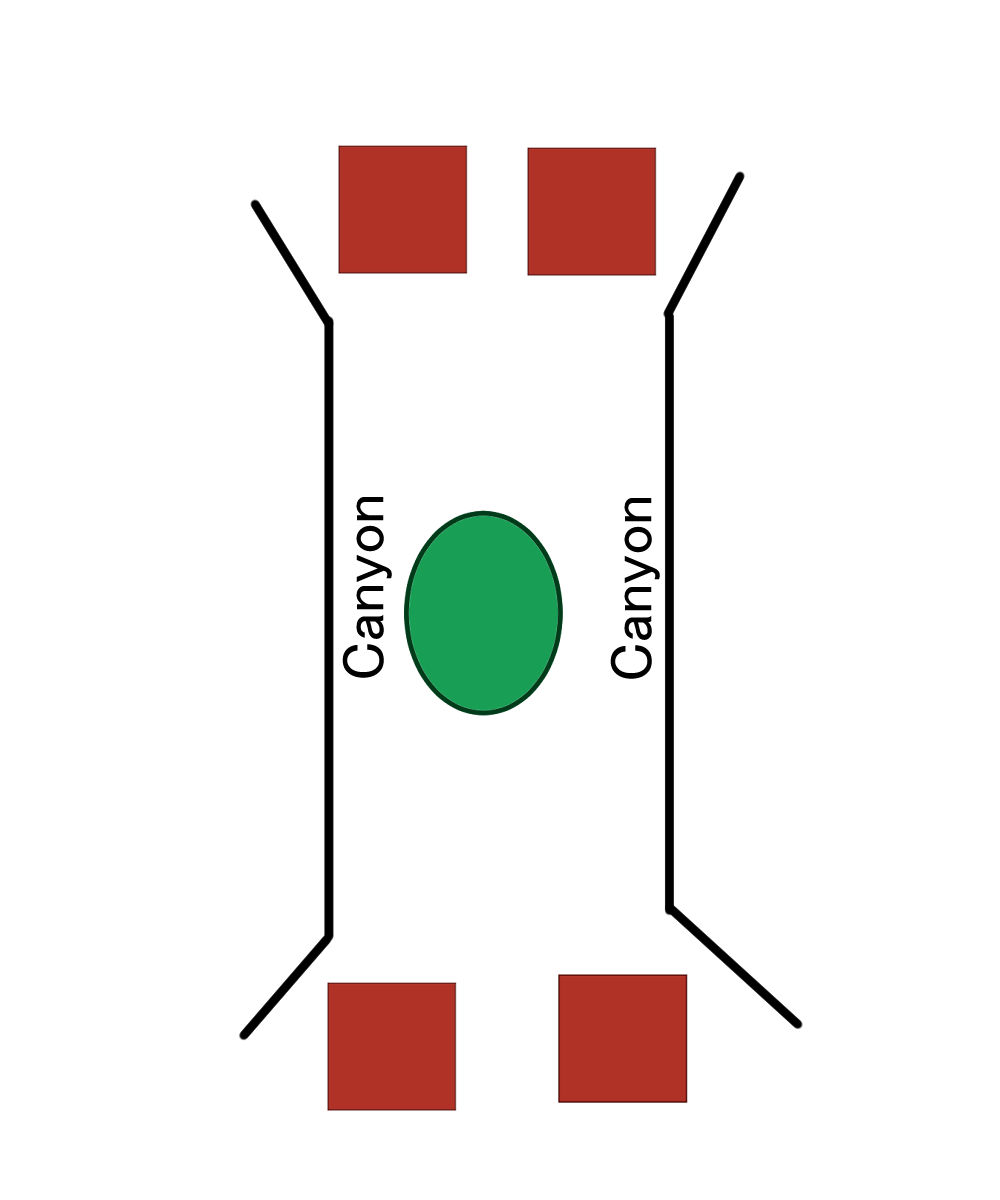
An animal is trapped in a canyon by two groups coming from each end. Commonly used by groups of only bulwarks. |
Creative Trap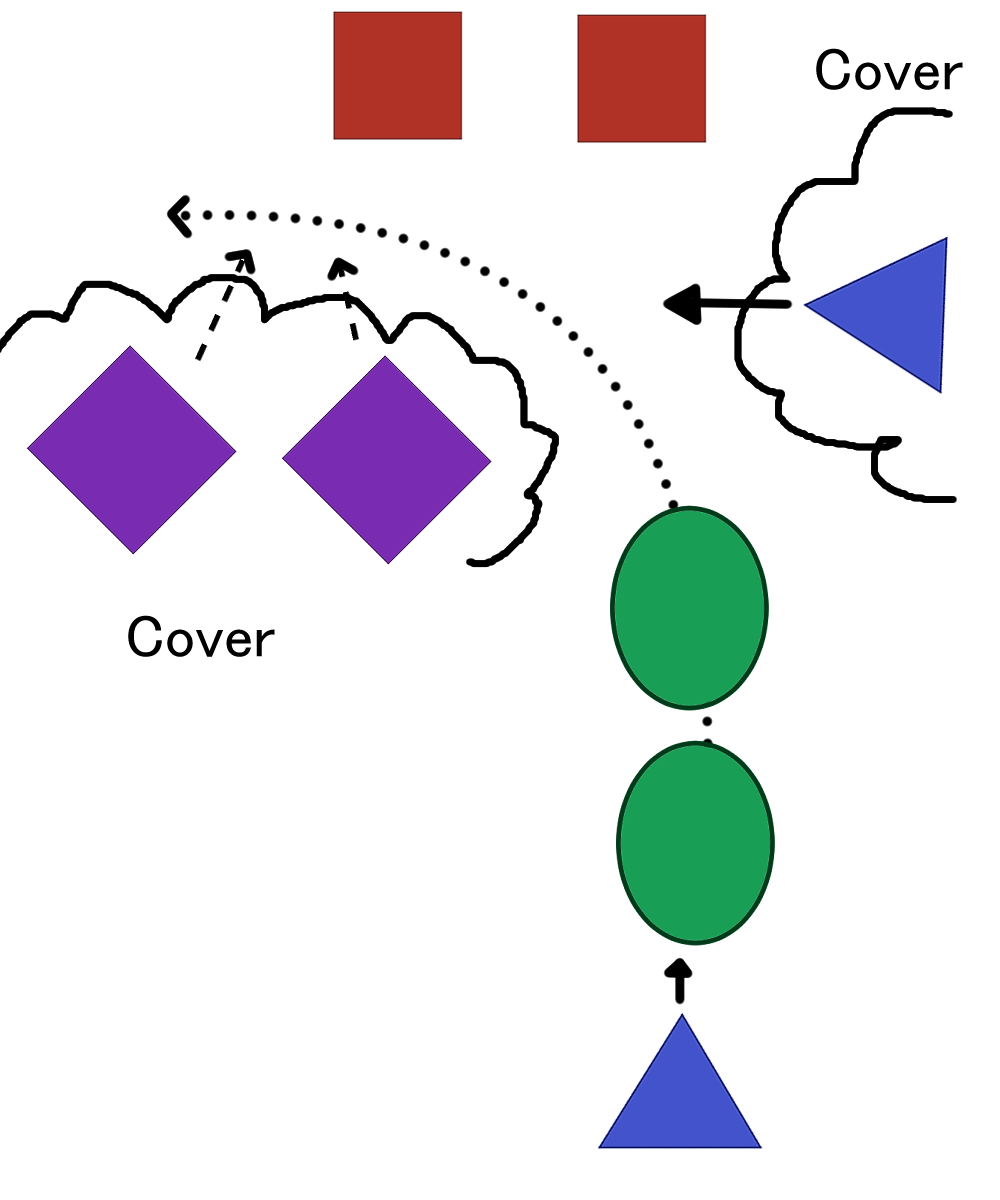
Arpines can come up with many different forms of complex and hybrid tactics, such as this situation where a chaser drives a herd towards a team of bulwarks who work with a hidden chaser who waits under cover to divert the herd into the direction of a team of flankers who are also under cover. |
Hunting Tools
While arpines are more than capable of hunting without the need of tools they still are willing to use tools to aid in their hunts. One of the most common tools is a hand dagger, which is often used as an extended claw and is driven into the back of a prey animal as an arpine leaps on them. Another common tool would be a pike which, historically, was mainly used as a defensive measure by bulwarks. Other tools would be be traps of various complexity as well as baits and lures. As technology progressed some arpines took up using firearms as their main method, although many find using such means unfulfilling and prefer the older methods. But even when preferring the old ways they may still utilize firearms as a backup and/or emergency plan to salvage hunts that have gone ugly in one way or another, although a few others will utilize firearms in ways that blend with primitive hunting methods such as using a snubnose revolver in a similar fashion to a hand dagger.